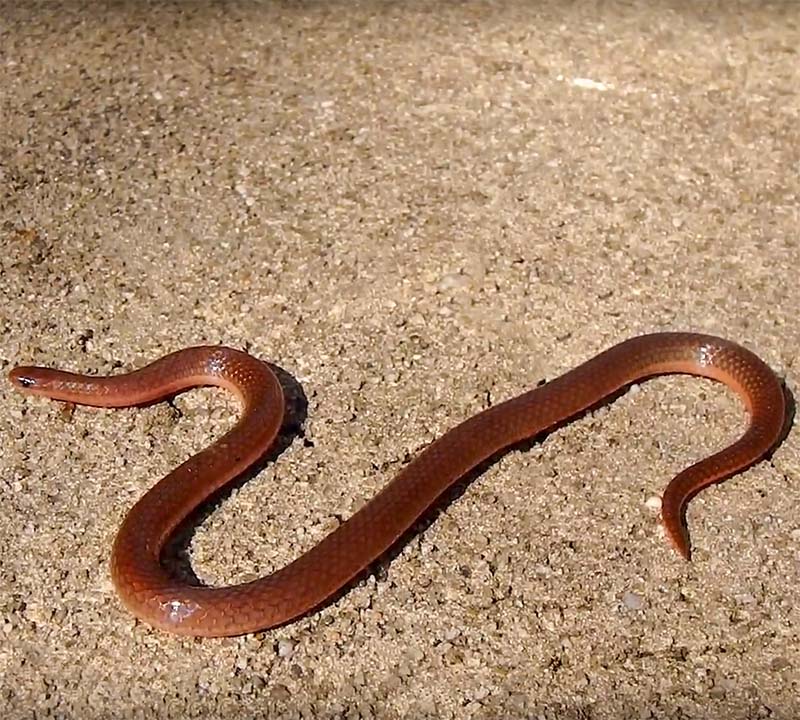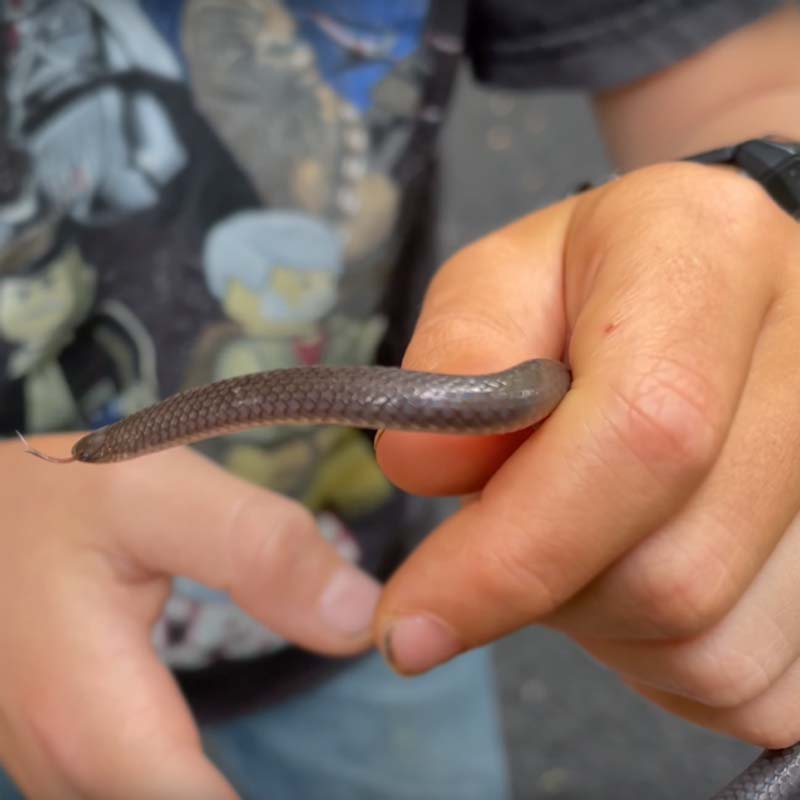
- Scientific Name
- Carphophis amoenus amoenus
- Range
- All of Virginia
- Also Known As
- Blind Snake, Cricket Snake, Blind Worm
- Venomous
- No
- Features
- Brown scales and small size which makes it looks like a worm
- Prey
- Earthworms
- Litter Size
- 2 to 8 Eggs per Birth
- Life Span
- 4 Years
- Length
- ~9 Inches
Quick Links for Eastern Worm Snake
Eastern Worm Snake Description
Eastern Worm Snake Appearance
These here in Virginia can be either dark brown or brown with their stomach being a reddish color. Due to these colors and it’s size, this snake tends to get confused with large worms rather frequently.
This snake tends to get confused with other small snakes as well, it is worth noting that this snake’s colors will stay the same with no patterns or rings.
Size
This snake is rather small, with adults being 7.5 – 11 inches tall. The record size was 13 inches. Females tend to be an inch larger on average.
Behavior
This snake loves moisture, in the dry season it prefers to burrow underground or hide in logs to grab as much moisture as it can. Due to this, this snake leaves it’s home during the evening to conserve moisture. In the rainy months or during the rain, this snake can roam during the day in open areas. This snake is active in the mornings, evenings, and sometimes in the night.
This snake is very docile, and can be held by humans with no issue, except for leaving an unpleasant odor when threatened. Sometimes this snake can use it’s pointed tail to try and prod prey and humans, but this tail does not break the skin.
Eastern Worm Snake Range and Habitat
Range
These are usually found in the wooded areas of the Eastern United States. The are seldom seen west of the Mississippi river, and are seen as far south as Central Georgia, and as far north as Central Ohio and Connecticut
Habitat
These snakes tend to be found in wooded areas near wetlands and swamps, and are seldom seen outside of the forested areas. These snakes prefer to hide in logs, rocks, loose soil, and piles of leaves.
Diet
These snakes commonly eat earthworms by swallowing them whole. The also sometimes eat soft bodied insects such as grubs, slugs, and sometimes snails.
Due to their choices of prey, they tend to hide in places where they frequent such as below logs, and near moist soil.
Reproduction and Young
Reproduction
This snake hasn’t been extensively studied and as such, most of their reproductive habits are guesswork. However, it is theorized that they mate in the spring, as both male and females are frequently seen together between April and June.
Eggs and Young
Eggs are laid in the early summer between June and July, and hatch in the late summer or early fall. There are usually between 2 to 8 eggs per nest or clutch.


